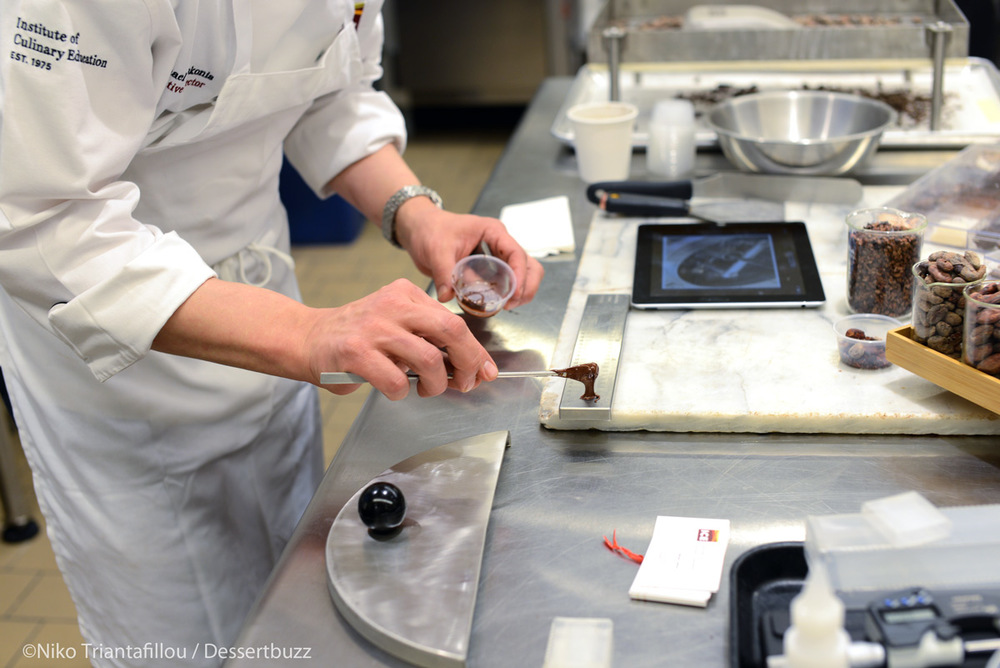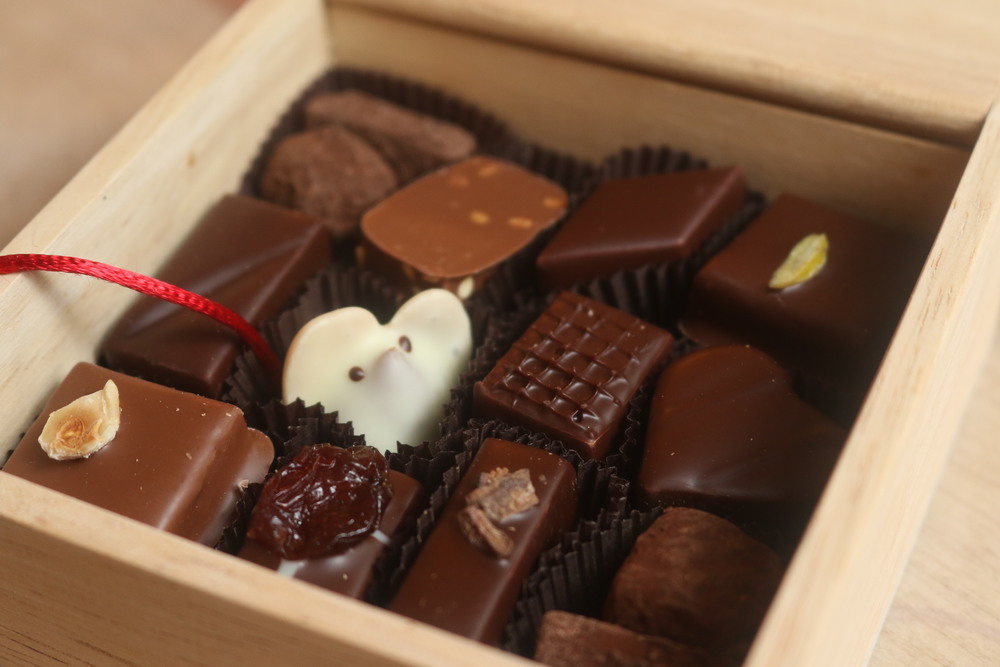What do you get when you combine craft chocolate lovers with four interesting bars and a blind tasting? Last week’s Underground Chocolate Salon, of course.
I’ve always been jealous of Paris in the 1920s, when artistic and literary luminaries gathered at Gertrude Stein’s house to talk and hang out: Picasso, Cézanne, Joyce, Eliot, Cocteau. Only one thing would have made it better: chocolate. That’s why I started what I’m calling the Underground Chocolate Salon, for like-minded (or not so like-minded) people to get together and talk chocolate, as well as enjoy one another’s company.
Up until now it’s been pretty unannounced (hence the name “underground”). But now I’m opening it up to the whole community. Still FREE, still fun, still small. If you want a spot at the next one, in New York on APRIL 20 from 6:30 to 8 PM, email me immediately at megan@chocolatenoise.com to let me know and I’ll send you the details and location.
In the meantime here are some notes from last week’s salon:
Lindt 70% Cocoa Smooth Dark
Used as an introduction to dark chocolate. Tasted smooth and eatable on first try. After the whole tasting we circled back to try it again: All vanilla and sugar, with some cocoa butter for texture.
I’d tried several chocolates from Bar au Chocolat’s line and especially loved the Marañon. Red fruit notes, tannic and somewhat bitter. Texture a bit gritty (probably because it’s a two-ingredient bar: cacao and sugar). Still tasty.
Cacao Prieto 72% Dominican Republic
Passionfruit. Smooth, creamy. Tastes like it has a lot of cocoa butter, but that’s not listed as one of the ingredients on the label.
Caramel, cooked milk. Condensed milk. “Tastes like Easter in a good way,” one attendee laughed.
Blind Tasting
I enlisted the salon to try three chocolates blindly: one from Mast Brothers, one from Sol Cacao, and one that I made for an upcoming story and a section in my book (thanks to Chocolate Alchemy and Raaka for dealing with my neuroticism). Here are the notes from all three. Can you guess which is which? Email me at megan@chocolatenoise.com or tell me on Facebook or Twitter and tell me, along with why, and I’ll include the results in the next Chocolate Today.
#1. Smelled sheetrock or something industrial. Gritty texture but smooths out. Flat. Strange aftertaste.
#2. Earthy. “Wet, dead fall.” Leaves, wood, but not in a bad way. Burny. Crumbly. More interesting. Enjoyed it and would pick this over #1 and #3.
#3. Peanuts. Boring, fine, flat. Nice texture.
Want to come to the next FREE Underground Chocolate Salon in New York? It will be APRIL 20 from 6:30 to 8 PM. Email me at megan@chocolatenoise.com.
What I'm Tasting Today
Chocolate Naive Porcini Bar
Read More Stories!
Askinosie: It's Not About the Chocolate, It's About the Chocolate
Soma: 20 Ways of Looking at a Chocolate Bar
Dandelion Chocolate: How Two Tech Nerds Revolutionized Bean-to-Bar Chocolate





























